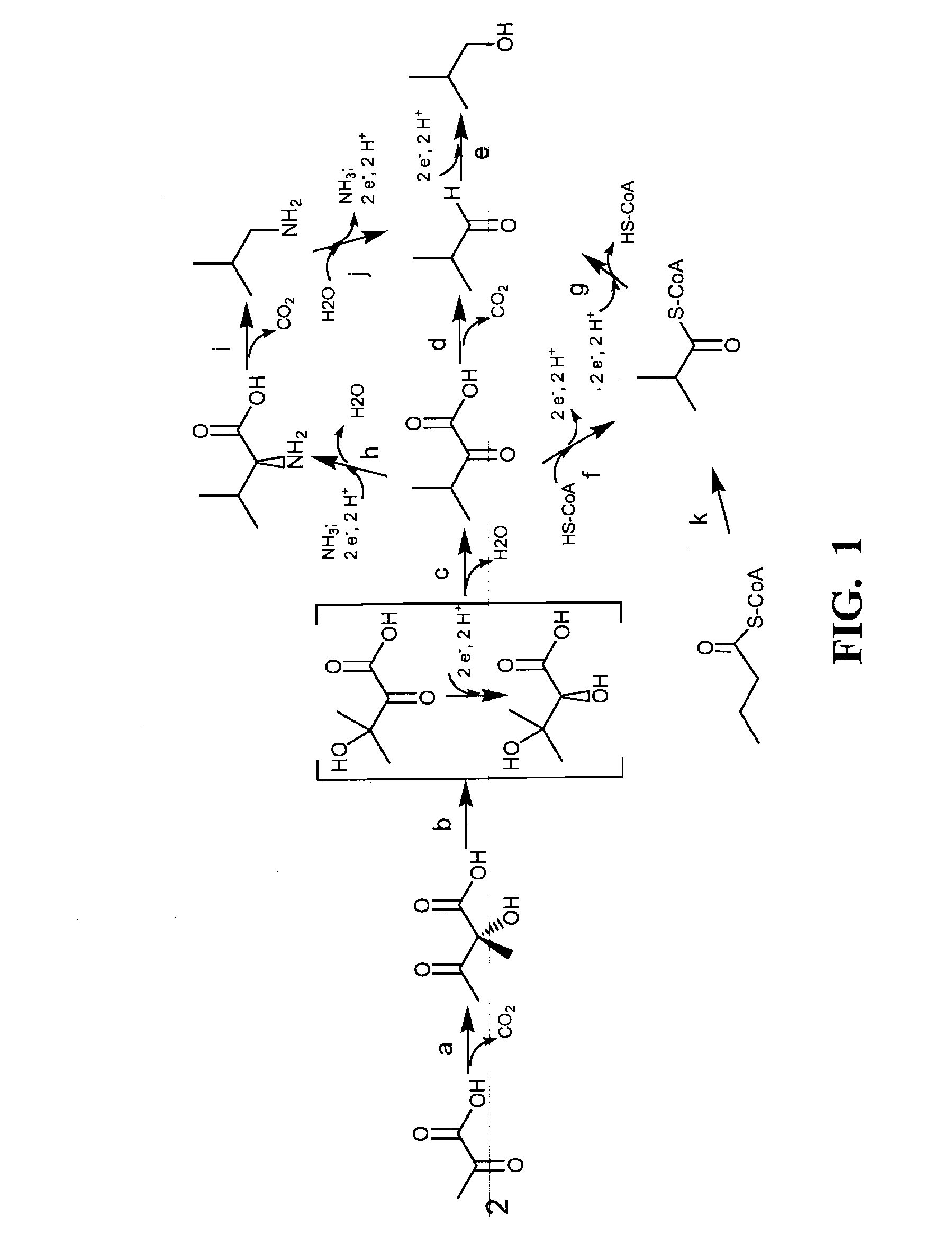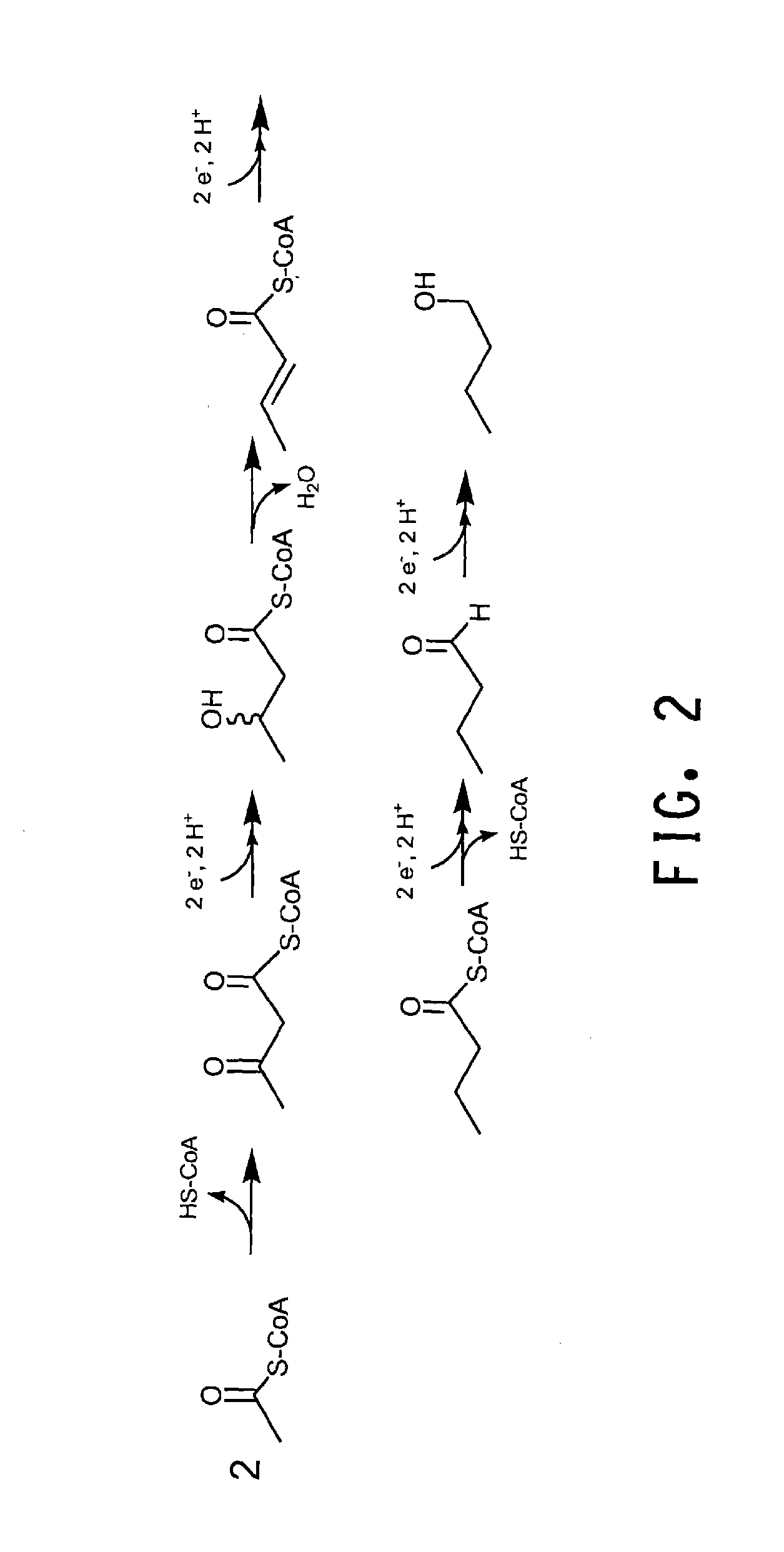Yeast with increased butanol tolerance involving filamentous growth response
a technology of filamentous growth and butanol, which is applied in the field of microorganisms and genetic engineering, can solve the problems of complex butanol sensitivity in yeast, low yield, and high cost, and achieve the effect of improving the tolerance to said butanol and increasing activity
- Summary
- Abstract
- Description
- Claims
- Application Information
AI Technical Summary
Benefits of technology
Problems solved by technology
Method used
Image
Examples
example 1
Isolation of a Plasmid from a Yeast Genomic DNA Library that Includes MSS11 and Causes Increased Isobutanol Tolerance
[0142]A S. cerevisiae genomic library in the multicopy E. coli / yeast shuttle vector YEp13 (ATCC 37323; Reed et al. (1989) J. Cell. Sci. Suppl. 12:29-37) was obtained from the American Type Culture Collection (Manassas, Va.). The library was provided in an E. coli host and supplies complete coverage of the S. cerevisiae genome with 10,000 clones containing random and / or overlapping fragments of genomic DNA. The library was amplified by growth of the E. coli host in LB for 16 hours with ampicillin (50 μg / ml) at 37° C. with shaking. The genomic library was extracted from E. coli using a Qiaprep Spin Miniprep Kit (Cat. No. 27104) and transformed into S. cerevisiae strain BY4741 (ATCC 201388) using a lithium acetate transformation procedure (Gietz et al. (1995) Yeast 11:355-360).
[0143]Competing chemostat bioreactors were used to identify components of the yeast genomic lib...
example 2 (
prophetic)
Overexpression of MSS11 in S. cerevisiae for the Purpose of Increasing Isobutanol Tolerance
[0148]The purpose of this prophetic example is to describe how to increase isobutanol tolerance in a yeast strain by constructing a recombinant plasmid that enables overexpression of MSS11. The MSS11 gene is amplified by PCR and inserted into a suitable yeast expression plasmid. The expression plasmid is a low copy number (CEN / ARS) or a high copy number (2μ) plasmid with a yeast transcription promoter (such as CYC1 promoter, ADH promoter, TEF promoter or GPD promoter), a yeast transcription terminator and a selectable marker (such as URA3, LEU2, TRP1 or HIS3). Several suitable expression plasmids such as p426TEF (with a URA3 selection marker) have been described (Mumberg et al. (1995) Gene 156:119-22).
[0149]The MSS11 coding sequence is amplified by PCR from S. cerevisiae genomic DNA with primers forMSS (5′-GGTATCTCCCGGATCCTTTGTC-3′: SEQ ID NO:57) and revMSS (5′-CGGTTAGTATTGGAAGAATTCC...
example 3 (
prophetic)
Production of Isobutanol in Recombinant S. cerevisiae with Engineered Isobutanol Pathway and MSS11 Overexpression
[0150]The purpose of this prophetic example is to describe how to enhance isobutanol production in a yeast strain by combining an isobutanol biosynthetic pathway with MSS11 overexpression. To this end we need to disrupt TRP1, the gene encoding phosphoribosylanthranilate isomerase that catalyzes the third step in tryptophan biosynthesis, to provide a third selectable marker. BY4741 is the starting strain. A cassette containing DNA sequences that are located upstream and downstream just outside of TRP1 (up TRP1 and downTRP1) is created containing the following elements: upTRP1 DR URA3* DR downTRP1, where DR are direct repeat sequences and URA3* is a heterologous URA3 gene. The upTRP1 DR URA3* DR downTRP1 fragment is constructed by the method of Reid et al. ((2002) Yeast 19(4):319-328). Following this method the 5′ and 3′ flanking regions of the TRP1 gene, which co...
PUM
| Property | Measurement | Unit |
|---|---|---|
| Time | aaaaa | aaaaa |
Abstract
Description
Claims
Application Information
 Login to View More
Login to View More - R&D
- Intellectual Property
- Life Sciences
- Materials
- Tech Scout
- Unparalleled Data Quality
- Higher Quality Content
- 60% Fewer Hallucinations
Browse by: Latest US Patents, China's latest patents, Technical Efficacy Thesaurus, Application Domain, Technology Topic, Popular Technical Reports.
© 2025 PatSnap. All rights reserved.Legal|Privacy policy|Modern Slavery Act Transparency Statement|Sitemap|About US| Contact US: help@patsnap.com



